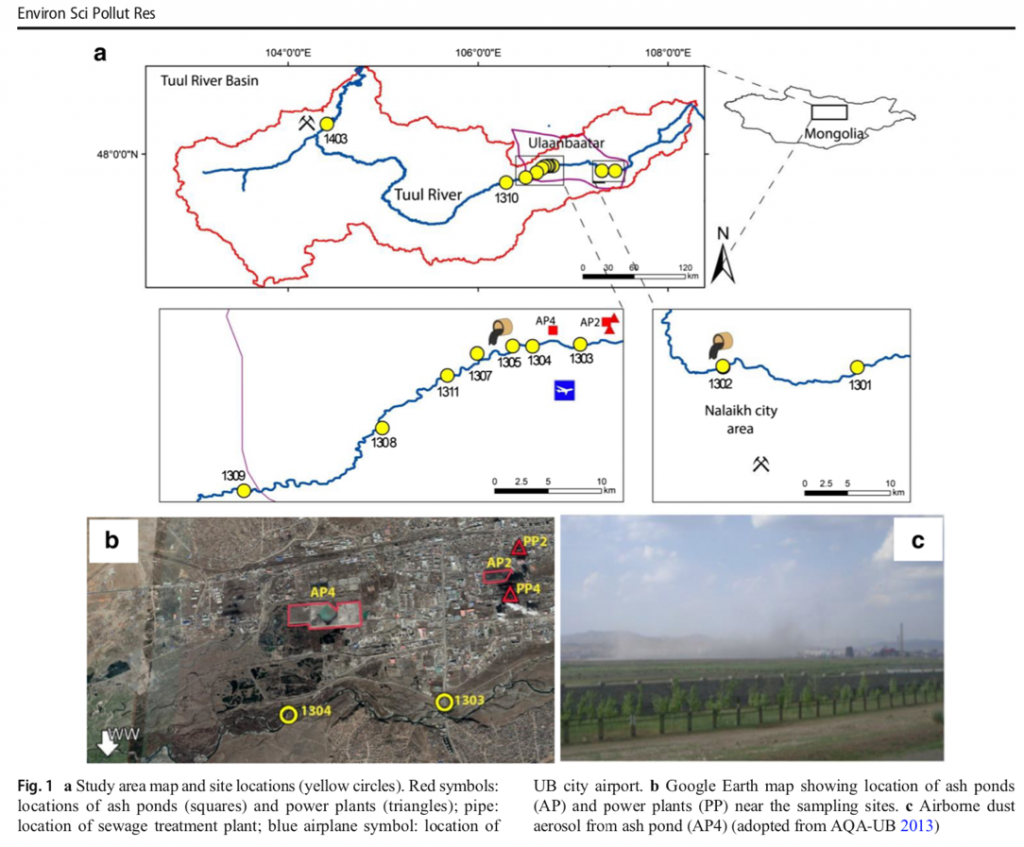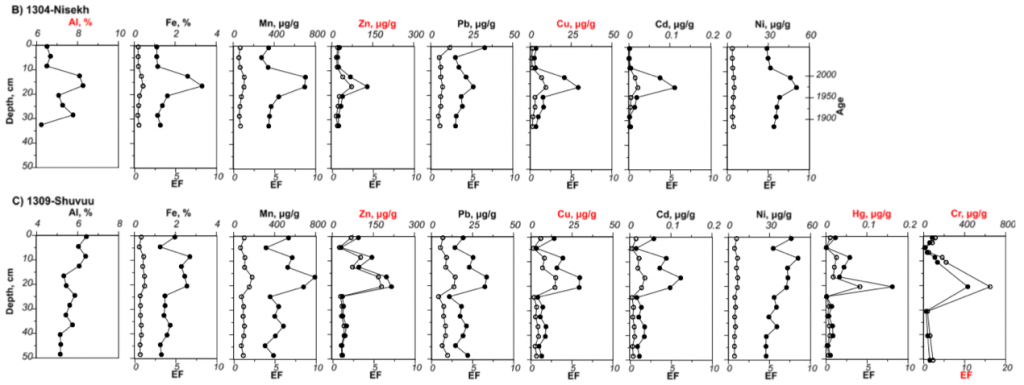Spatial and temporal variations of sediment metals in the Tuul River, Mongolia
Environmental Science and Pollution Research, in press
https://doi.org/10.1007/s11356-019-06428-9
Mongolia has been a pristine environment without much pollution. Our objective is to study a section of the Tuul River to evaluate the present condition of this pristine environment. Sediment metal (Al, Fe, Mn, Cu, Zn, Pb, Ni, Cd, Hg, and Cr) concentrations and Pb-210 were sampled and analyzed. Results showed that metal concentrations are much higher at areas near the capital city and municipal sewage outlet, with enrichment factor values up to 18 for Cu, and 26 for Cr. Higher copper concentrations were found at sites about ~ 50 km downstream from the source, an indication that pollutions are spreading further down the river. Vertical metal concentration profiles indicated that pollutions could be traced back to the 1960s. Inefficient sewage treatment plants and poorly managed power plant ash ponds were major sources of metals leaking into the Tuul River. Sewage wastewater is carrying metals through Tuul River to the lower river basin. Dusts from ash ponds are airborne and transport to greater area. These findings indicate that new and alternative measures have to be enforced to prevent further pollution entering the Tuul River drainage basin and airborne dust to other broader regions of the Asia and ocean.

 Fig.3 Vertical metal concentration profiles in Tuul River sediment. (●concentration; ○ crustal enrichment factor). Different scale X-axes for some higher value were labeled by red
Fig.3 Vertical metal concentration profiles in Tuul River sediment. (●concentration; ○ crustal enrichment factor). Different scale X-axes for some higher value were labeled by red










